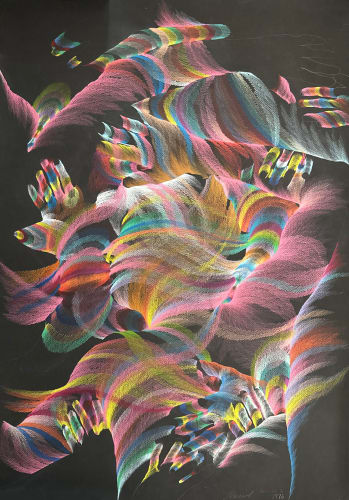"Delicate plaster hands, impassive wooden faces, an occasional painted area of elegance—these ingredients tell little or nothing about Marisol’s work, about the pathos, irony, and outrageous satire. Whether she designs a single figure or a large group, she invariably ends up with a biting comment on human foibles . . . . With fertile imagination Marisol transforms daily experiences into unexpected phenomena. No one has deflated Human Pomposity with greater insight."
— Katherine Kuh on Marisol [1]
Marisol Escobar (b. 1930, Paris, France - d. 2016, New York, USA) embarked on a distinctive artistic journey characterized by vibrant sculptures and iconic chalkboard paintings. While her work has occasionally been associated with Pop art, Marisol's exploration of the raw power of artistic materials and her nuanced relationship with Abstract Expressionism defy simplistic categorization. Raised amid familial tension and a nomadic lifestyle, Marisol's early experiences fueled her profound engagement with the complexities of the human experience.
The tragedy of her mother's suicide shattered familial bonds and prompted Marisol to embrace silence as a powerful form of self-expression. This deliberate silence, coupled with her beauty and sociability, created an enigmatic persona that resonated in the art world. Her art, showcased in pivotal exhibitions like the 1962 Stable Gallery show, evolved over the years, encompassing confrontational and totemic sculptures as well as a return to folk art aesthetics in her mature career. Marisol's enduring impact is evident in major retrospectives and her representation in esteemed collections worldwide, solidifying her lasting presence in the art landscape.
